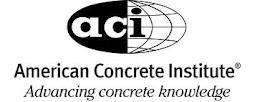A working group of the American Concrete Institute’s (ACI) Committee 131 on Building Information Modeling (BIM) is actively developing an Information Delivery Manual (IDM) for cast-in-place concrete. The IDM will capture in written form the interaction that occurs in the design and construction of concrete structures by identifying the parties involved in information exchange, what information is exchanged and when, based on a typical construction project timeline.
This IDM project is the outcome of ACI’s Strategic Development Council’s (SDC) initiative to focus the concrete industry on developing interoperability standards, and represents the first step in the development of data exchanges into the buildingSMART’s Industry Foundation Classes (IFC). IFC is an open and neutral data exchange format that covers construction information related to procurement, design, construction, and operations. IFCs will allow project information to be entered once, and then to be available and usable by every project team member across any software platform. The improved communication, coordination, and collaboration afforded by BIM implementation have already been shown to save time and money in projects.
A $60,000 grant from the Charles Pankow Foundation accounts for the majority of the $90,000 funding for this IDM project. Remaining funding is provided by Bechtel, Tekla, Bentley, Applied Systems Associates (aSa), RMC Research & Education Foundation, CRSI Education & Research Foundation, ASCC Foundation, Post Tensioning Institute, and two of the ACI Foundation’s Councils – the Concrete Research Council (CRC) and the Strategic Development Council (SDC).
A team from Georgia Technological University’s Digital Building Laboratory headed by Professor Chuck Eastman will assist the ACI IDM working group. The group’s first meeting took place during December of 2011 in Atlanta and its expected to complete the IDM by the end of 2012. The next meeting will be held in conjunction with the ACI Spring 2012 Convention in Dallas, Texas. BD+C
Related Stories
| Nov 15, 2010
Gilbane to acquire W.G. Mills, Inc.
Rhode Island-based Gilbane Building Company announced plans to acquire W.G. Mills, Inc., a construction management firm with operations based in Florida. The acquisition will dramatically strengthen Gilbane’s position in Florida’s growing market and complement its already established presence in the southeast.
| Nov 11, 2010
Saint-Gobain to make $80 million investment in SAGE Electrochromics
Saint-Gobain, one of the world’s largest glass and construction material manufacturers, is making a strategic equity investment in SAGE Electrochromics to make electronically tintable “dynamic glass” an affordable, mass-market product, ushering in a new era of energy-saving buildings.
| Nov 11, 2010
Saint-Gobain to make $80 million investment in SAGE Electrochromics
Saint-Gobain, one of the world’s largest glass and construction material manufacturers, is making a strategic equity investment in SAGE Electrochromics to make electronically tintable “dynamic glass” an affordable, mass-market product, ushering in a new era of energy-saving buildings.
| Nov 11, 2010
USGBC certifies more than 1 billion square feet of commercial space
This month, the total footprint of commercial projects certified under the U.S. Green Building Council’s LEED Green Building Rating System surpassed one billion square feet. Another six billion square feet of projects are registered and currently working toward LEED certification around the world. Since 2000, more than 36,000 commercial projects and 38,000 single-family homes have participated in LEED.
| Nov 10, 2010
$700 million plan to restore the National Mall
The National Mall—known as America’s front yard—is being targeted for a massive rehab and restoration that could cost as much as $700 million (it’s estimated that the Mall has $400 million in deferred maintenance alone). A few of the proposed projects: refurbishing the Grant Memorial, replacing the Capitol Reflecting Pool with a smaller pool or fountain, reconstructing the Constitution Gardens lake and constructing a multipurpose visitor center, and replacing the Sylvan Theater near the Washington Monument with a new multipurpose facility.
| Nov 9, 2010
Just how green is that college campus?
The College Sustainability Report Card 2011 evaluated colleges and universities in the U.S. and Canada with the 300 largest endowments—plus 22 others that asked to be included in the GreenReportCard.org study—on nine categories, including climate change, energy use, green building, and investment priorities. More than half (56%) earned a B or better, but 6% got a D. Can you guess which is the greenest of these: UC San Diego, Dickinson College, University of Calgary, and Dartmouth? Hint: The Red Devil has turned green.
| Nov 9, 2010
12 incredible objects being made with 3D printers today
BD+C has reported on how 3D printers are attracting the attention of AEC firms. Now you can see how other creative types are utilizing this fascinating printing technology. Among the printed items: King Tut’s remains, designer shoes, and the world’s smallest Rubik’s Cube.
| Nov 9, 2010
U.S. Army steps up requirements for greening building
Cool roofs, solar water heating, and advanced metering are among energy-efficiency elements that will have to be used in new permanent Army buildings in the U.S. and abroad starting in FY 2013. Designs for new construction and major renovations will incorporate sustainable design and development principles contained in ASHRAE 189.1.









